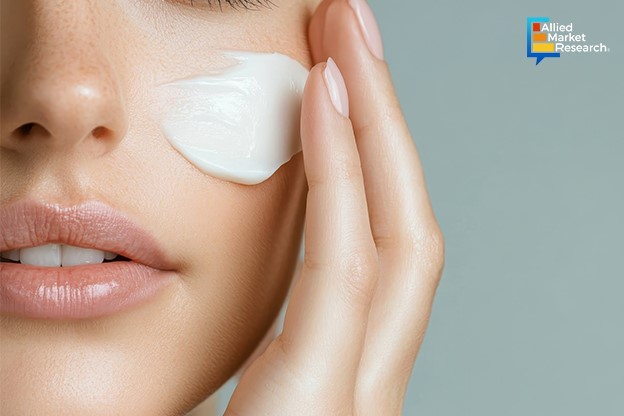How Are Emollients Revolutionizing Beauty and Skincare Solutions?

5 Mar
2025
- A brief on emollients
- Significant use cases of these useful substances
- Popular forms of emollients
- Key initiatives taken by industry leaders in the sector
Emollients are substances that are used to soften and smoothen the skin. They are often found in creams, lotions, or ointments. These products fill gaps between skin cells with lipids, leaving the skin feel softer and more comfortable. Emollients are particularly useful for treating dry, irritated, or scaly skin conditions such as eczema, psoriasis, and ichthyosis by forming a protective barrier that traps moisture and prevents water loss.
The growing use of emollients in skin, hair, and drug formulations
In the last few years, the emollient industry has grown significantly as its uses have expanded across different applications. Emollients are essential in managing dry skin conditions like eczema, psoriasis, and dermatitis by providing hydration and protection. They are widely used in lotions, creams, and ointments to maintain skin health and prevent moisture loss.
Moreover, the use of these substances in hair care products provides moisture, acts as heat protectants, and enhances shine. They form a protective barrier against environmental stressors, maintaining hair health by locking in moisture and shielding from damage. This helps prevent dryness and breakage, improving hair texture and overall appearance.
On the other hand, in pharmaceutical formulations, emollients enhance drug delivery and skin compatibility, reducing irritation. They soothe skin reactions caused by medications, making them ideal for treating conditions like eczema and psoriasis. Emollients improve the solubility and stability of active drugs, facilitating even distribution and penetration through the skin barrier. This helps maintain therapeutic effects drugs while minimizing systemic absorption, ensuring effective localized treatment with reduced side effects.
Exploring popular types of emollients
There are majorly two prime types of emollients, and many moisturizers contain a mix of both. Occlusives, such as petroleum jelly, mineral oil, lanolin, and liquid paraffin, are one of the forms of emollients that create a thick, greasy layer on the skin and are water insoluble. They don't add moisture but help retain existing moisture, effectively preventing water loss and keeping the skin hydrated. These features make them useful for dry skin conditions.
On the other hand, humectants are other types of emollients that include glycerin, hyaluronic acid, propylene glycol, and urea. They help attract and retain moisture in the skin, making it feel softer and more hydrated. While occlusives are more durable and less likely to wash off, humectants are less greasy but are easy to wash away. Many skincare products combine both types to achieve optimal moisturizing effects.
LBB Specialties and Kerry Group Forge partnered for eco-friendly beauty solutions
In February 2025, LBB Specialties, a leading North American distributor of specialty chemicals and ingredients, announced a new partnership with Kerry Group, a renowned leader in taste and nutrition solutions. Kerry Group offers innovative, sustainable specialty ingredients for the personal care industry.
Under this agreement, LBB Specialties is expected to serve Kerry's exclusive distribution partner in the United States and Canada for its latest range of emollients, emulsifiers, and fermentation-derived actives. These ingredients are designed for skincare, personal care, and cosmetics, supporting both companies' goals of providing high-quality, sustainable beauty solutions.
Evonik’s new Steinau facility pioneered eco-friendly cosmetic emollients
In September 2024, Evonik inaugurated a new multimillion-euro production facility for cosmetic emollients in Steinau, Germany. The plant utilizes an enzymatic esterification process from the company’s biotechnology platform to convert vegetable oils, enhancing sustainability. Johann-Caspar Gammelin, president of the Nutrition & Care division, said that this investment reduces its global carbon footprint and is expected to enable beauty industries to develop eco-friendly solutions.
Emollients, which comprise 10-25% of cosmetic emulsions, contribute 70-80% of the climate impact of a product. Evonik’s innovative process cuts this footprint by over 60%. Additionally, the Steinau facility operates entirely on renewable energy, which reflects the sustainability goals of the company. This investment reinforces Evonik’s vision to produce beauty solutions while supporting industry-wide efforts to lower environmental concerns.
Endnote
Emollients are beneficial substances that help heal dryness, irritation, and scaling and make individuals’ skin look and feel better. The diverse use cases of these ingredients in producing effective skincare solutions highlight their versatility, catering to different skin conditions. Moreover, the growing consumer preferences for natural and sustainable skincare products are expected to fuel the demand for emollients in the future.
For more insights into the emerging applications of emollients, reach out to our industry analysts today!

Koyel Ghosh
Author’s Bio- Koyel Ghosh is a blogger with a strong passion and enjoys writing in miscellaneous domains, as she believes it lets her explore a wide variety of niches. She has an innate interest in creativity and enjoys experimenting with different writing styles. A writer who never stops imagining, she has been serving the corporate industry for the last five years.
Avenue: Entire Library membership of Allied Market Research Reports at your disposal
- Avenue is an innovative subscription-based online report database.
- Avail an online access to the entire library of syndicated reports on more than 2,000 niche industries and company profiles on more than 12,000 firms across 11 domains.
- A cost-effective model tailored for entrepreneurs, investors, and students & researchers at universities.
- Request customizations, suggest new reports, and avail analyst support as per your requirements.
- Get an access to the library of reports at any time from any device and anywhere.
Related Post
-
How are Submarine Cables Transforming Global Connectivity with Enhanced User Experience?
-
Endoscopy Procedures: Transformations in Techniques and Applications
-
AI-Powered Video Analytics: How the Product Actually Works for enterprises
-
Painting Robots: Transforming Precision Coating and Creative Applications
-
Innovations in Pharmacovigilance Systems Advancing Patient Safety
-
Understanding Edge Security: Keeping Data Safe Near the Source
-
Exploring the Use and Advancements of 3D Laser Scanners in Professional Applications
-
Reinforcing Industrial Controls with Smarter Tools and Training








